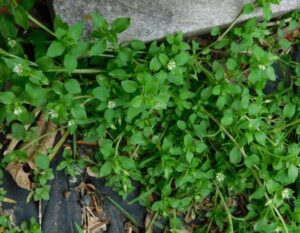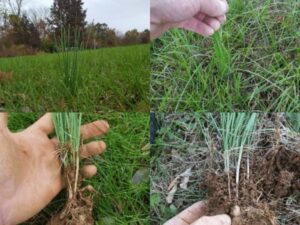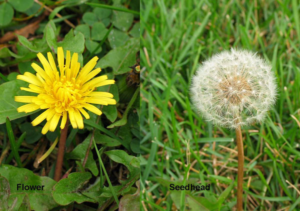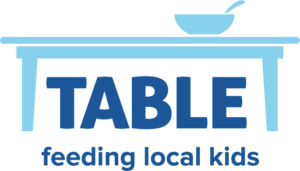“A weed is a flower growing in the wrong place” – George Washington Carver
When I think about springtime at TABLE, the first thing that comes to mind is lettuce. It’s a crop that loves the cool weather but not the cold temperatures of this season which means our local farm partners share it in abundance.

Common chickweed
We include veggies like carrots, radishes, and microgreens in the bags we distribute to our families so they can turn heads of lettuce into flavorful salads. While exciting in April, at the beginning of the growing season, by late May kids and adults start to feel a little “saladed out.
But did you know, there are plants in your backyard that can be used to spruce up your spring greens? One of my favorite activities to do with groups of elementary school students is to make a “yard salad.” You can do this by walking around your yard or a nearby field looking for edible plants. You might find that some of the weeds you’ve been trying to get out of your yard are actually good to eat! Here are a few examples to look out for the next time you are out cutting the grass.

Wood sorrel
Chickweed: Chickweed grows in leafy clusters, dotted with little white flowers. Its flowers have five petals each, but the petals are deeply indented so it looks like they have ten petals. This plant is essentially a microgreen, with a juicy, mild flavor. You can also use chickweed instead of basil to make a pesto.
Onion Grass: Onion grass has many names, like crow garlic, stag’s garlic, and field garlic. It looks like a bundle of thin chives poking out in your lawn. If you dig down just a bit, you’ll find bulbs that look like tiny, individual garlic cloves. Onion grass also smells strongly of, well, onions! It’s a great substitute for chives and adds a funky, oniony flavor to food.

Wild onions and garlic
Wood Sorrel: This plant looks like a small 3-leaf clover and has yellow flowers. You will probably also see tiny pods that look like okra. All parts of wood sorrel are edible and it has a lemony flavor. Great for adding a bright flavor to your dish.
Dandelions: These well-known plants are easily recognizable by their yellow flowers and leaves with pointed tips like arrows. Disliked by gardeners for their deep roots, dandelions are hard to get out of garden beds and lawns, but their flowers, leaves, and roots are all edible. The leaves have a slightly bitter taste and are best when picked before the plant flowers. Roasted dandelion roots can be used to make a drink that tastes similar to coffee, but is caffeine-free.

Dandelion
While foraging is a fun way to learn about new plants, it’s important to be safe while harvesting. If you’re not sure the plant you’ve found is non-toxic, trust your gut and leave it be! It is also recommended not to eat plants growing next to roads since pesticides are often sprayed in these areas to keep vegetation away from the concrete. Always wash the plants you pick before eating them to ensure they are free from dirt and the occasional bug.
After collecting your yard salad ingredients and washing them off, mix them with lettuce and other vegetables and toss in your favorite salad dressing.
Making a yard salad is a great way to teach kids about plants and where food comes from, especially if you don’t have the space or time to grow your veggies. If you have a child who isn’t a salad lover, this activity may spark more interest in trying a salad. When kids take part in making their food, they tend to be more curious about how it tastes.
Happy weed hunting!

Abi Warmack


